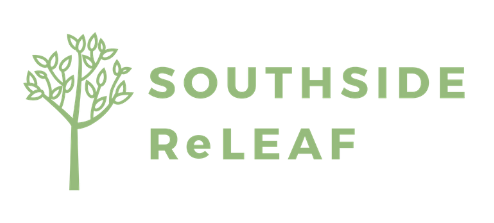Plant Selection at Ernest Road: Ferns
Christmas Fern (Polystichum acrostichoides)
Christmas fern is a rhizomatous subterranean, decumbent, woody, densely scaly-scruffy evergreen in the Polypodiaceae family. Found growing in rich rocky woods, along stream banks, in swamps or thickets to a height of 2 to 3 feet in a fountain-like form. The leaves are known as fronds and these fronds have many leaflets and grow directly from the ground in a clump, so no bark is present. No flowers are produced. The fern produces spores on the underside of the leaf but not all fronds are fertile. The fertile fronds are narrower at the tip. Curled fiddleheads of new leaves emerge silvery in the spring. Songbirds use the parts and scale-like hairs in nest construction.
Christmas Fern Overview
Christmas Fern Close-up
Christmas Fern Early Stage
Christmas Fern Spores
Marginal Wood Fern (Dryopteris marginalis)
Marginal shield fern is a Virginia native, evergreen, perennial fern in the polypody family (Polypodiaceae). The fern typically forms a vase-shaped clump up to 3 feet tall, but is usually smaller. This is a woodland fern most often found in shaded crevices of rocky ledges and bluffs. Features grayish-green, deeply cut, leathery fronds (15 to 20 inches long). Sori are located at the edges or margins of the pinnule undersides, hence the common name, marginal. Its evergreen fronds provide good interest to the winter landscape. It provides year-round cover near the ground. Deer will browse the plant. Its parts are used in songbird nest construction.
Marginal Wood Fern Overview
Marginal Wood Fern Close-up
Marginal Wood Fern Close-up
Marginal Wood Fern Spores
Goldie’s Wood Fern (Dryopteris goldieana)
This fern can be found across the majority of eastern North America and within forested areas as well as seepage swamps. In the mountains and Piedmont of North Carolina .This moist soil-loving plant is one of the largest ferns within the polypody family (Polypodiaceae) and can grow to be 4 feet tall. Goldie’s wood fern is easily distinguishable from others, as its fronds are 2 to 3 feet long, ovately shaped, and taper at the tip. The dark-to-golden green compound leaves have 12 to 18 pairs of leaflets that are alternately arranged on the stalk. Although these fronds do turn pale yellow in the fall, this species is named after Scottish plant collector John Goldie, who introduced this plant to the United Kingdon from Canada.
Goldie’s Wood Fern Overview
Goldie’s Wood Fern Overview
Goldie’s Wood Fern Leaves
Goldie’s Wood Fern Spores
Bracken Fern (Pteridium latiusculum)
The bracken fern is a coarse, rhizomatous fern that can be found all over the world (except Antarctica!). It is typically found in a variety of environments, including woodland areas, old pastures, marshes, and areas with highly disturbed soils. This fern grows about 3 feet tall and 4 feet wide and has triangular, pinnately compounded fronds that can reach 3 feet long. Once stablished, this fern is difficult to remove as its rhizomes can grow up to 20 feet long and 10 feet deep! This fern is poisonous and is toxic to animals as well as humans. All parts of this plant are toxic and can lead to weight loss, fever, incoordination, and a thiamine deficiency if ingested for long periods of time. Milk from cows that have ingested this plant can be toxic to humans.
Bracken Fern Overview
Bracken Fern Rhizomes
Bracken Fern Emerging Fiddleheads
Bracken Fern Spores
New York Fern (Thelypteris noveboracensis)
This wispy fern is a member of the Thelypteridaceae family and can be found along the forest floor of the eastern United States and Canada. New York fern colonies are common in sunny patches and serve as a wetland indicator. It thrives in acidic soil, allowing it to outcompete other species Its leaves vary in length, ranging from 8 inches to 25 inches long and 4 inches wide. The base of the fronds tend to be brown and turn green close to the alternately arranged leaflets. Its blades are distinctive as they taper at the base as well as the tip. Because of this fern’s heavy groundcover presence, it provides excellent shelter for toads, ground birds, and other fauna.
New York Fern Form
New York Fern Overview
New York Fern Leaves
New York Fern Spores




















